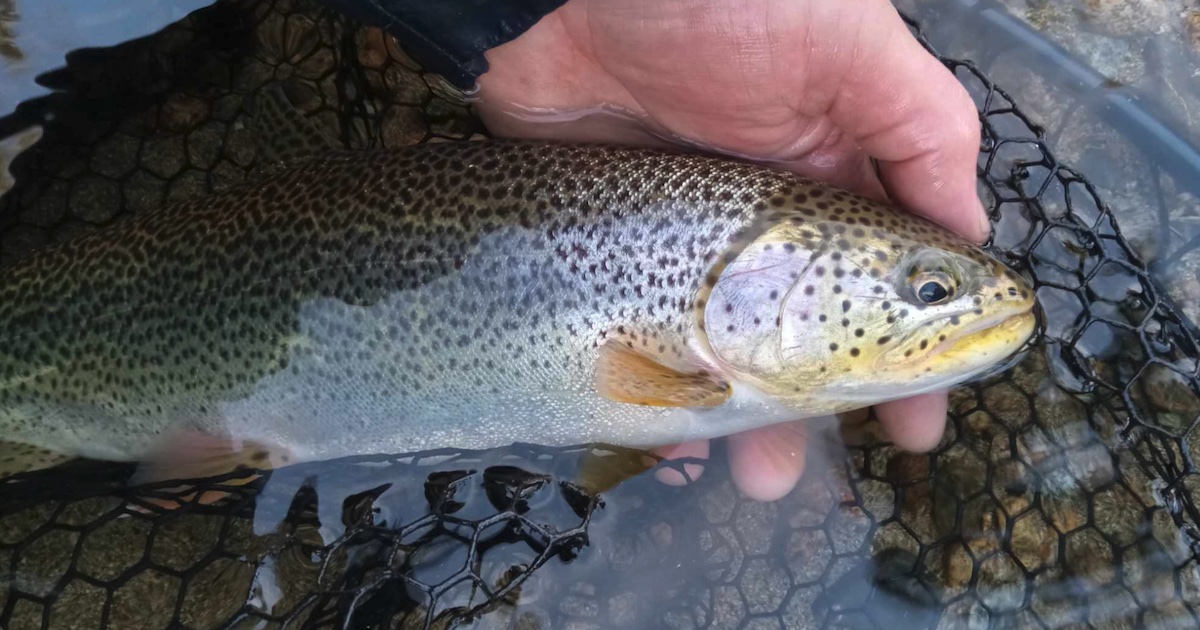
When most of British Columbia is buried under ice and snow, many of us put away our fly-fishing equipment. Unless you have access to a good steelhead stream and can withstand the extreme cold and frozen eyelets (which I can’t), you are stuck repairing or maintaining gear and waiting for break-up. Those of us who dwell near the coast, however, can do what I do: fish for sea-run cutthroat trout.
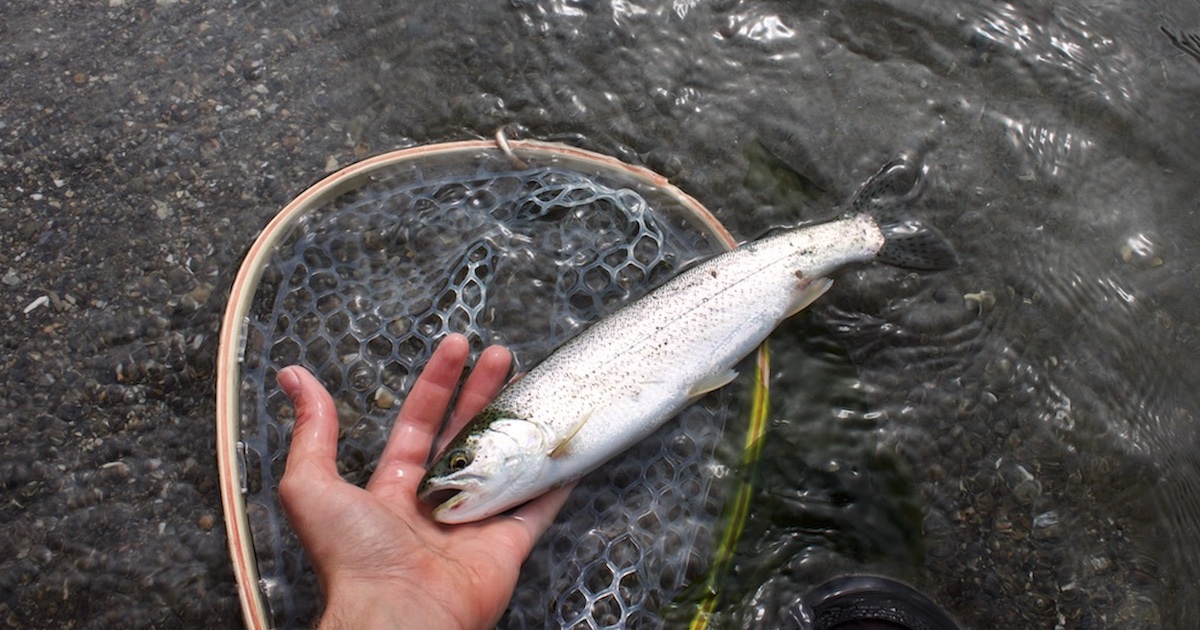
Winter fishing for Sea-Run Cutthroat Trout Photo: Alec Hansen
Much of our coastline supports varying populations of sea-run cutthroat trout, but since these trout move a lot, you can never be sure that they will show up at your location on any given day. There are, however, a few things that will aid you in locating and catching these beautiful trout.
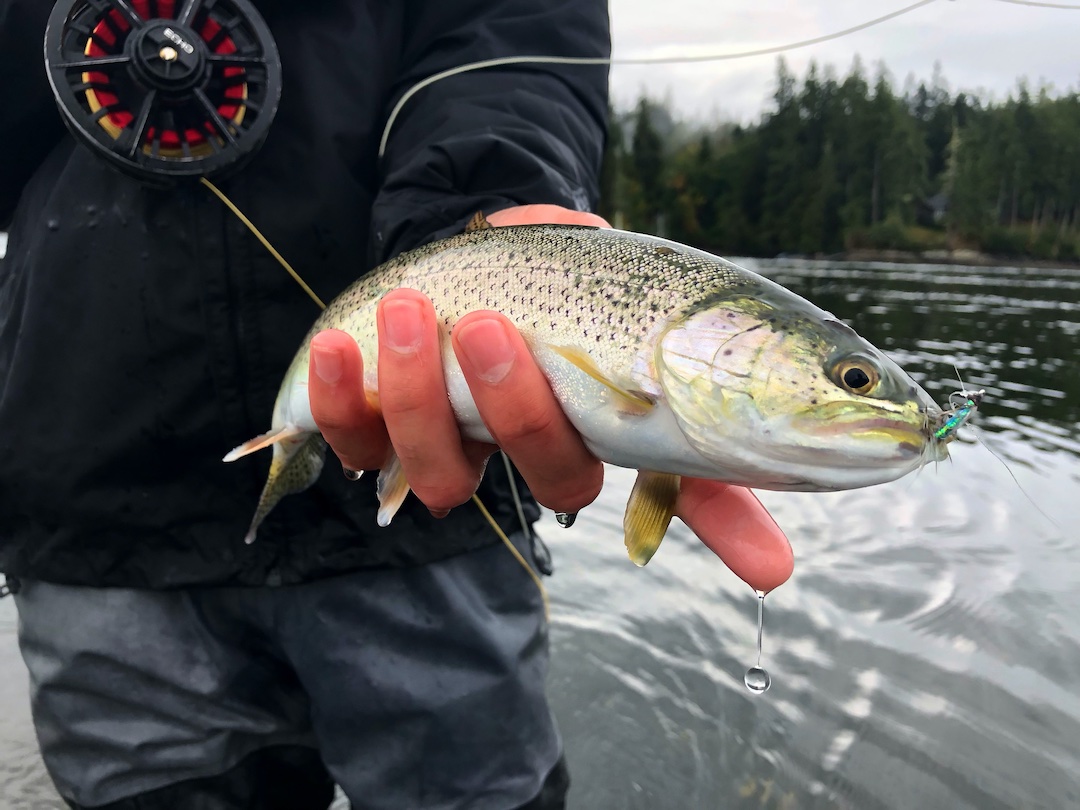
Sea-Run Cutthroat on a green California Neil Photo: Will Gillis
The first and best thing you can do to increase your chances of success is talk to the fisheries officers at the Ministry of Environment. They can steer you to areas that support populations of sea-runs. The trout are usually associated with the beaches and estuaries of smaller streams, especially in the spring when the salmon fry are migrating downstream. The mouth of the Oyster and Eve rivers both support sea-runs, as well as Fulford Harbour on Salt Spring Island. Information on where populations of sea-runs exist will save you innumerable hours spent searching fruitlessly for these fish in areas they do not inhabit.
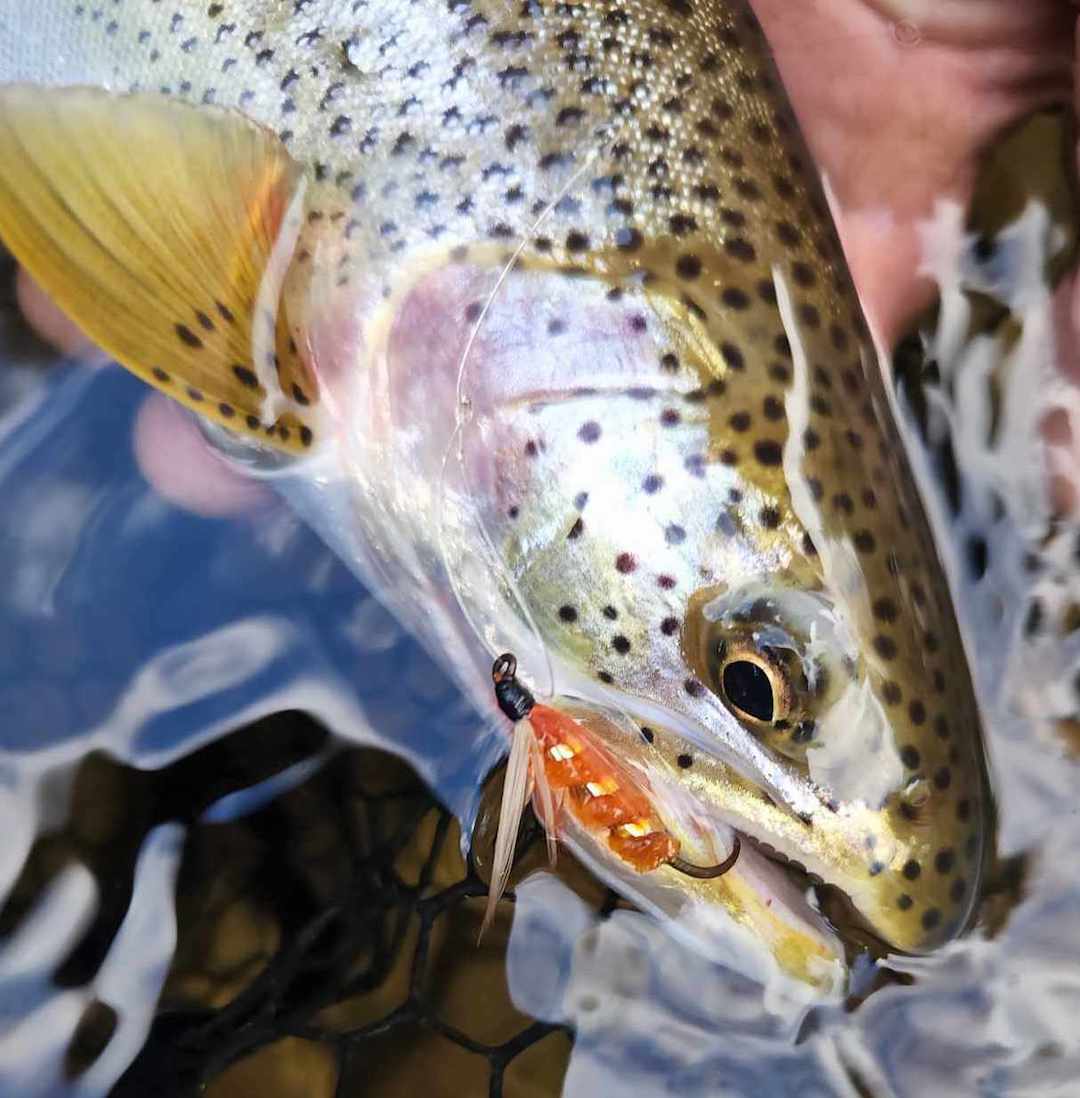
Sea-Run Cutthroat Trout closeup. Photo: Pat Demeester of Cutthroat Coast Company
Investing in tide tables is the second-best thing you can do to give yourself an advantage. Sea-run cutthroats show up during the late rising and flood tide. I assume that this is because bugs and other goodies get caught up in the rising water, and smaller fish eat them. The sea-runs probably follow these smaller fish into the shallows and gobble them up as they cruise along. With this in mind, you can start thinking about what patterns to tie up or buy that might entice them to strike.
Sea-runs like to move, and they seldom stay in one spot for more than a few minutes before cruising further down the beach. Locating the schools is the greatest challenge, and a good pair of binoculars saves a great deal of walking. Pay particular attention to wharfs and pilings, downed trees, and rockfalls. These places offer protection for the trout and usually host more forage fish as well.
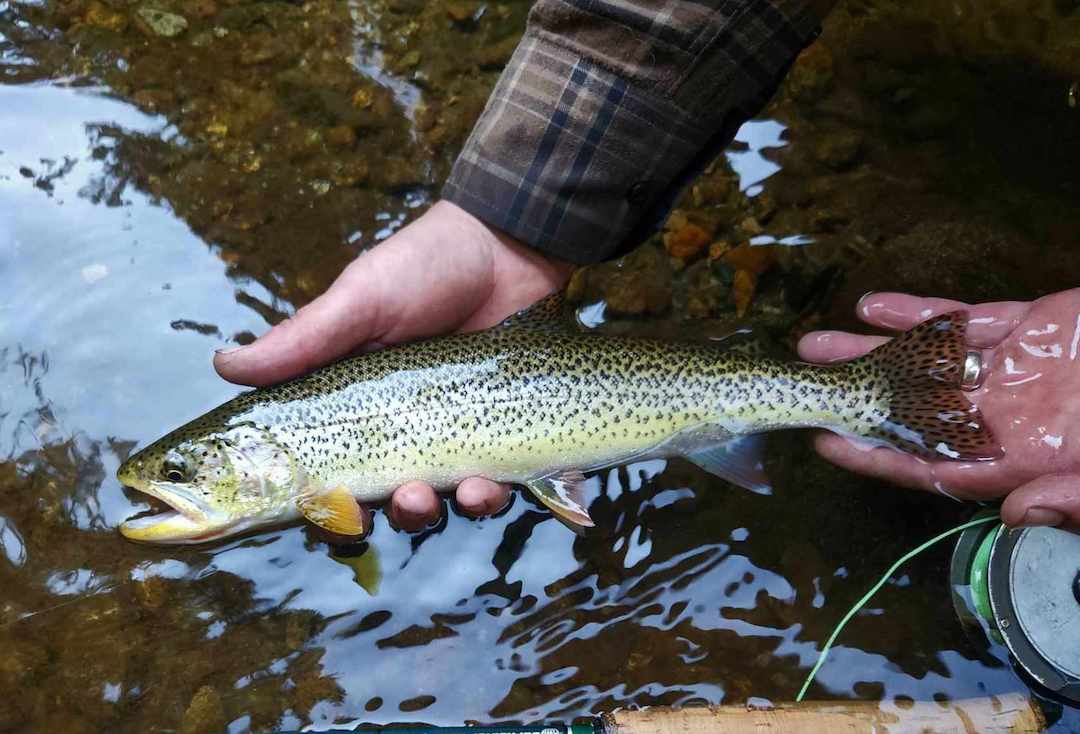
Cutthroat on the fly. Photo: Pat Demeester of Cutthroat Coast Company
Sea-Run Cutthroat Fishing Gear
You don’t need any special gear to pursue these fish; a five-weight system approved for saltwater is all you need.
Fly patterns for freshwater cutthroats are many and varied, but patterns for sea-runs are few. Three standard patterns for the ocean-going cutthroats that continue to work remarkably well are the Mickey Finn, the Professor, and the rolled muddler. The Mickey Finn and Rolled Muddler are small streamer patterns that imitate baitfish.
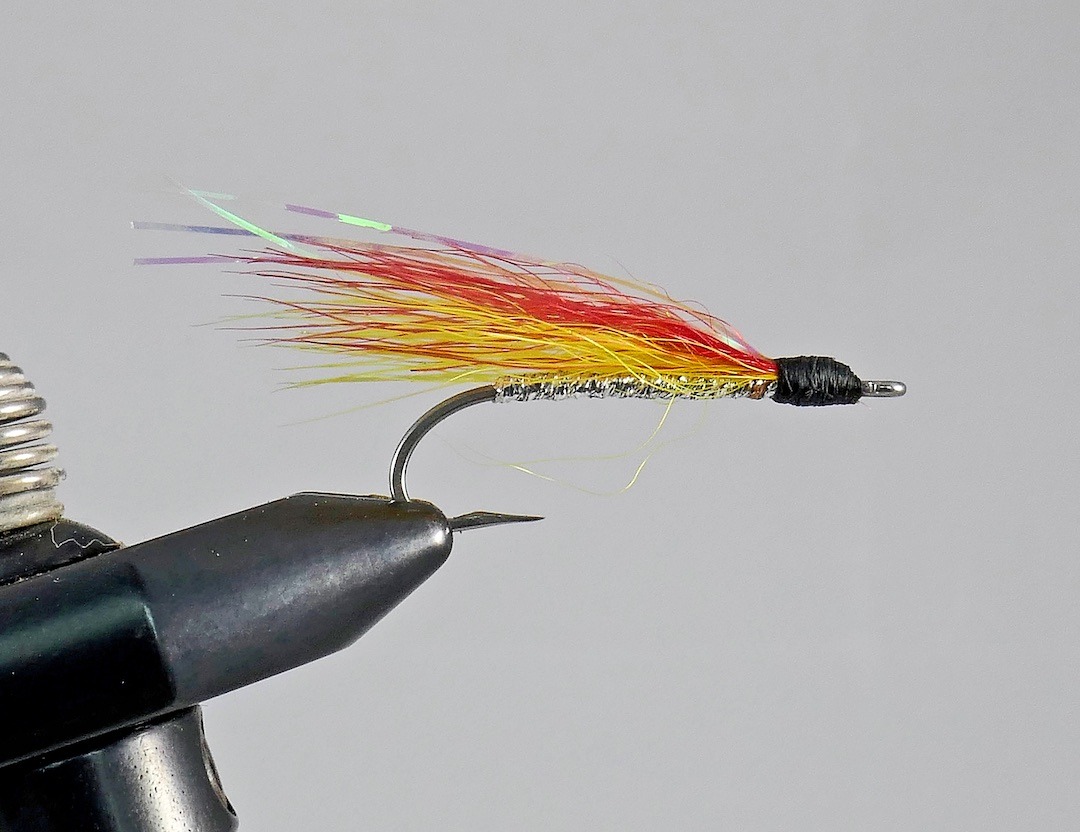
Mickey Finn Fly. Photo: Bill Luscombe
The Professor is a very old attractor pattern that relies on an interesting quirk that the sea-runs seem to have. Sea-run cutthroats, for some reason, seem to be attracted to yellow hues. I have fished many different patterns and colours when pursuing these fish, and flies that contain yellow or gold work best. Keep this in mind when buying or designing your own patterns. You don’t need any special gear to pursue these fish; a five-weight system approved for saltwater is all you need.
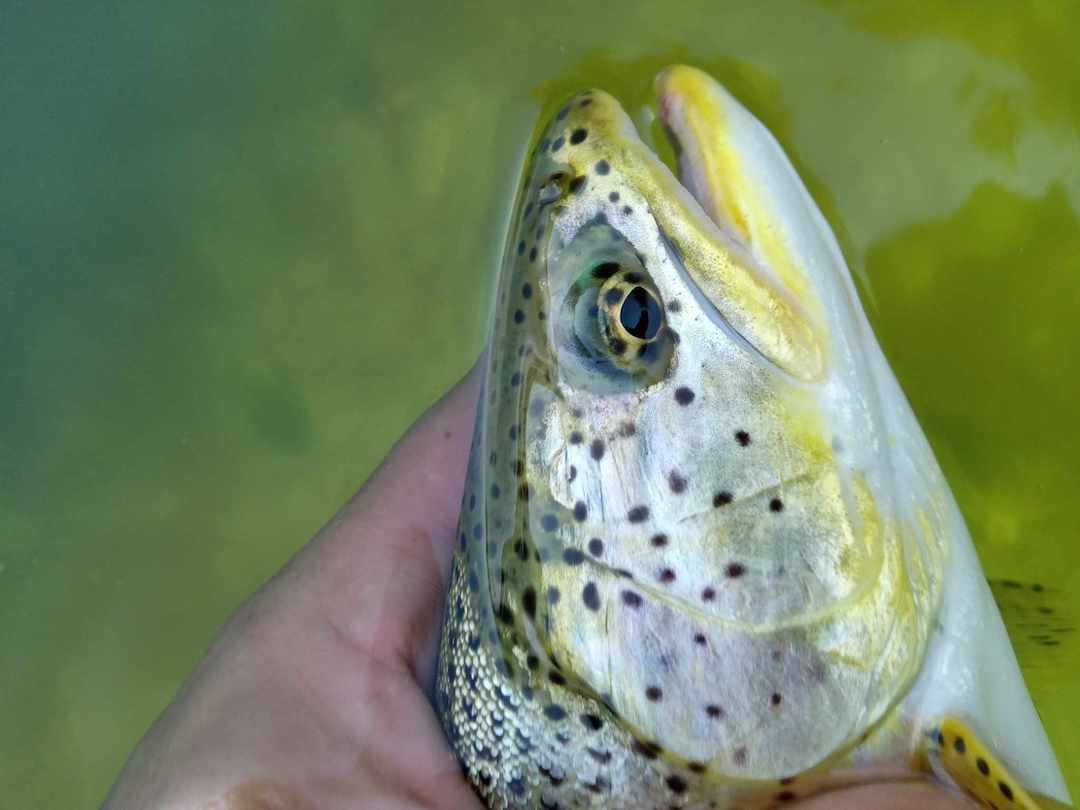
Sea-Run Cutthroat Trout British Columbia Coast. Photo: Pat Demeester of Cutthroat Coast Company
My personal fly patterns are nothing more than slight variations on a theme. I tie my flies on a stainless steel #6 or #8 3X long shank hooks. The hook is often left bare, but sometimes I’ll wrap on some silver chenille or opalescent tubing. At the head I tie in bucktail of various colours ranging from hot pink to navy blue, but I always start with a bit of yellow and tie in the other colour(s) over that. That’s it. These little streamers are some of the easiest flies in the world to tie; the only pattern that is easier is a crystal scud.
With the knowledge of where and when to go, and armed with your killer flies, you can now venture out in pursuit of these fish. When you arrive at your chosen location, simply stand and watch the water. If they are there they won’t be very far offshore, usually within 50 meters. Sea-run cutthroats like to travel in small schools and will often break the surface while feeding, usually in a rolling manner, but sometimes jumping clear of the water, and this is a dead giveaway to their location.
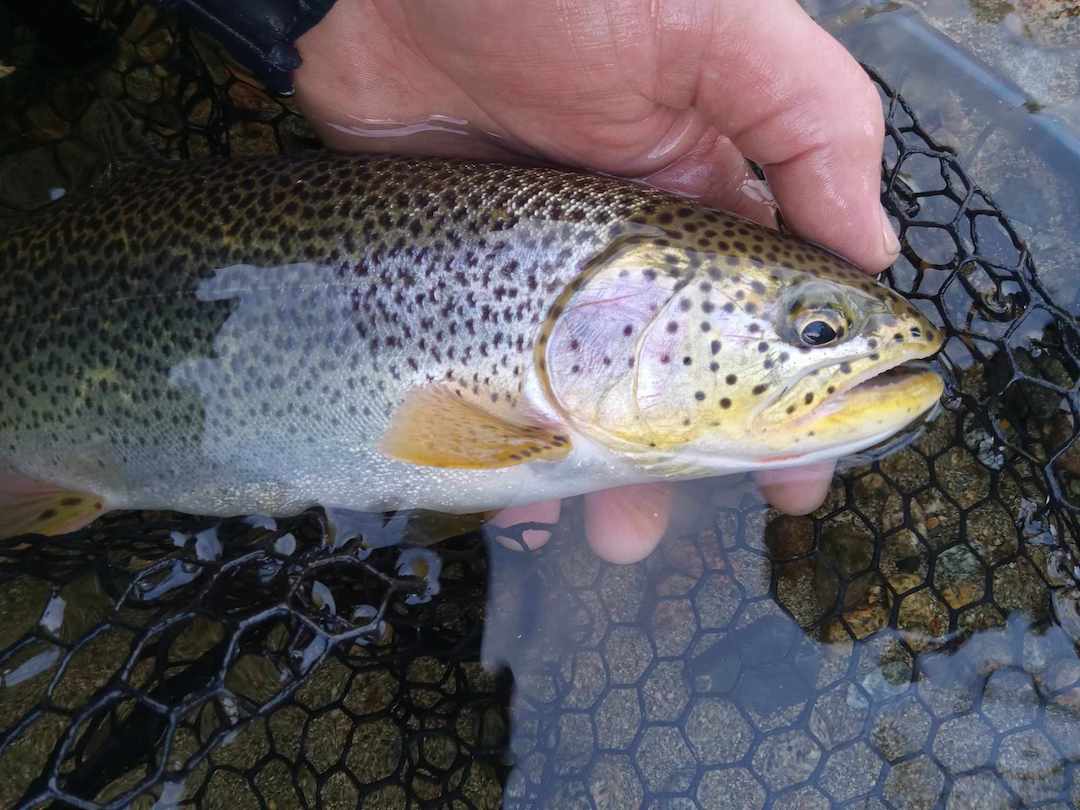
Coastal BC Sea-Run Cutthroat Trout with scratches. Photo: Pat Demeester of Cutthroat Coast Company
If after a few minutes you don’t see anything nearby, put your binoculars to work. Systematically search up and down the shoreline, looking for signs of rolling fish. Fishing the water blind for these trout can produce fish, but it is much more reliable and productive to spot jumping or rolling trout and target them specifically. Keeping this in mind, you may wish to wait them out, or you can enter the water and cast blindly to pass the time.
There is no guarantee that they will show up at all, however, and you might want to walk along the shore in search of a school. If you are in a small boat or pontoon boat you can row along slowly just offshore and watch for signs of trout.
There’s not a lot of special skill required to catch these trout. The toughest part of the whole game is finding them. If you can find the cutthroats and get your fly out to them, you will usually catch them. A point to keep in mind: These are rare fish and one of the treasures of B.C.
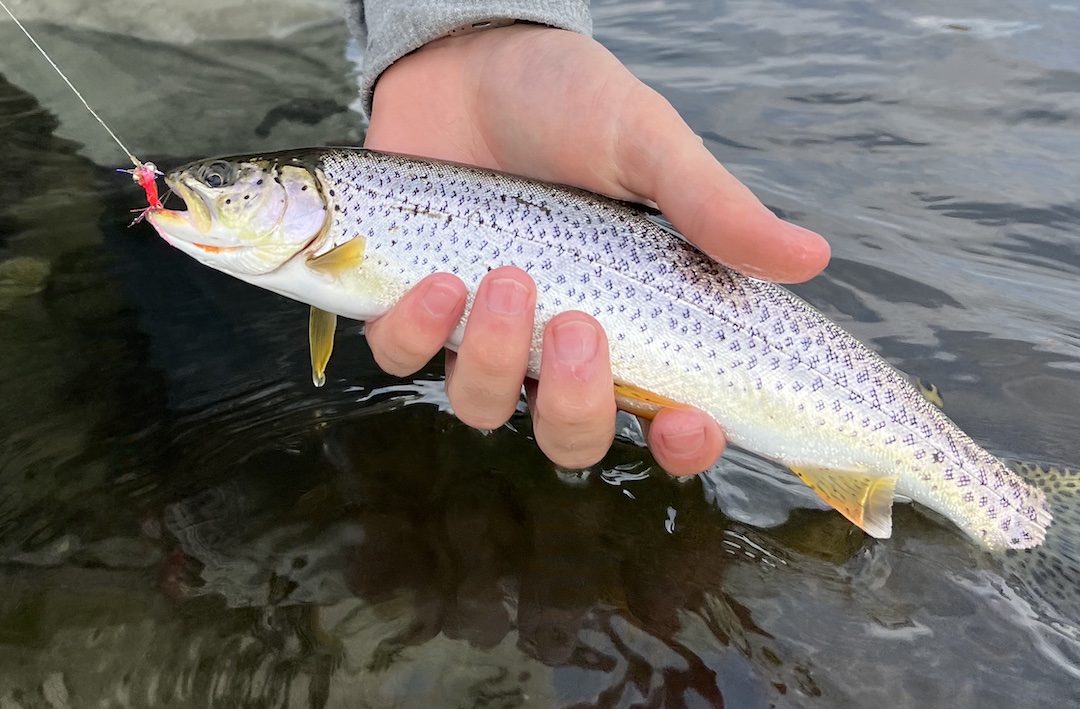
Coastal BC Cutthroat on the fly. Photo: Will Gillis
Barbless hooks and catch and release are the order of the day (and the letter of the law) when fishing for sea-run cutthroats in BC. You may not find them, and if you do you may not hook any. But one thing is for sure: It beats staying home watching television.
This article appeared in Island Fisherman magazine. Never miss another issue—subscribe today!
One Comment
Leave A Comment
Visit the Store
$34.99
$34.99
Featured Catch
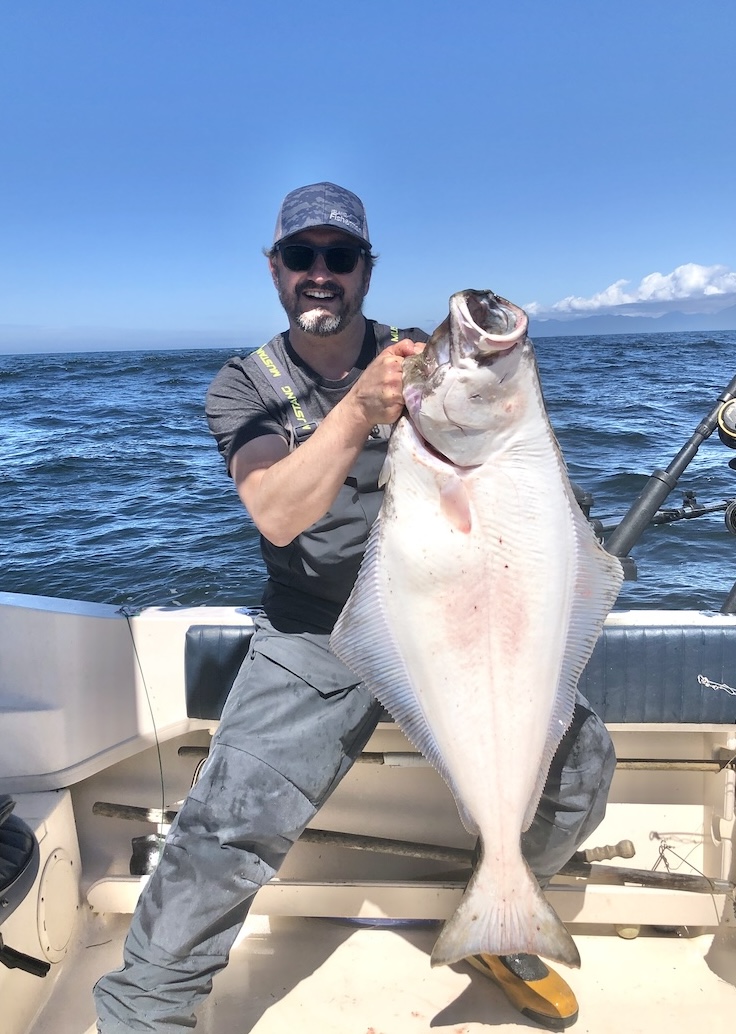
Joel Unickow halibut (Photo: Rob Frawley Lucky Strike Sportfishing Tofino)
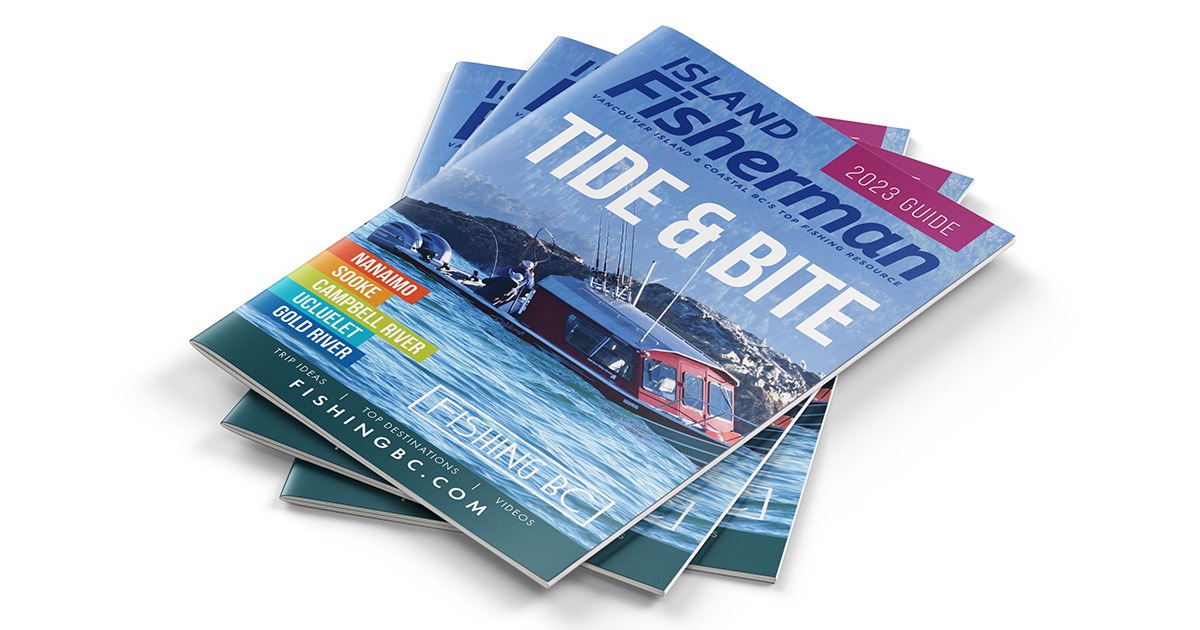


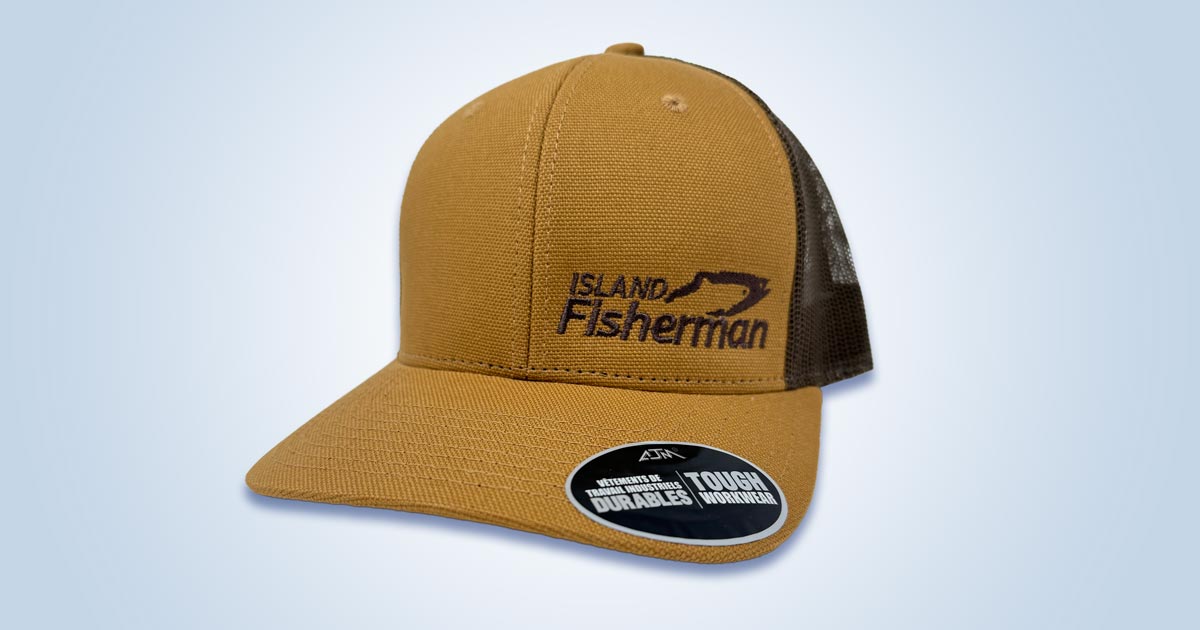

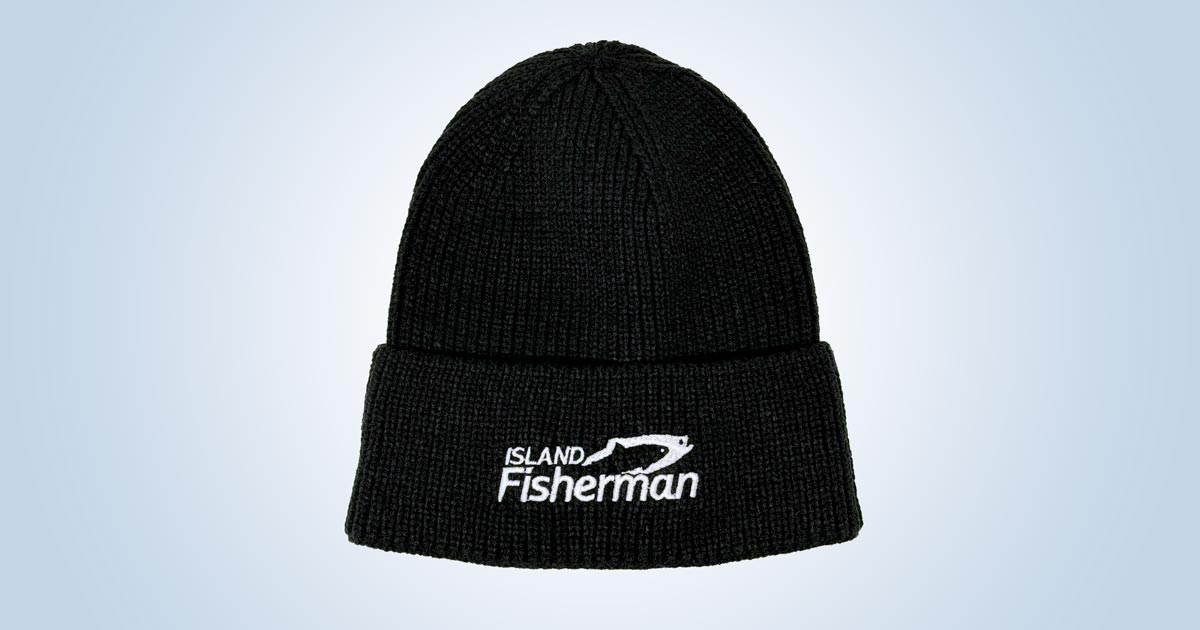
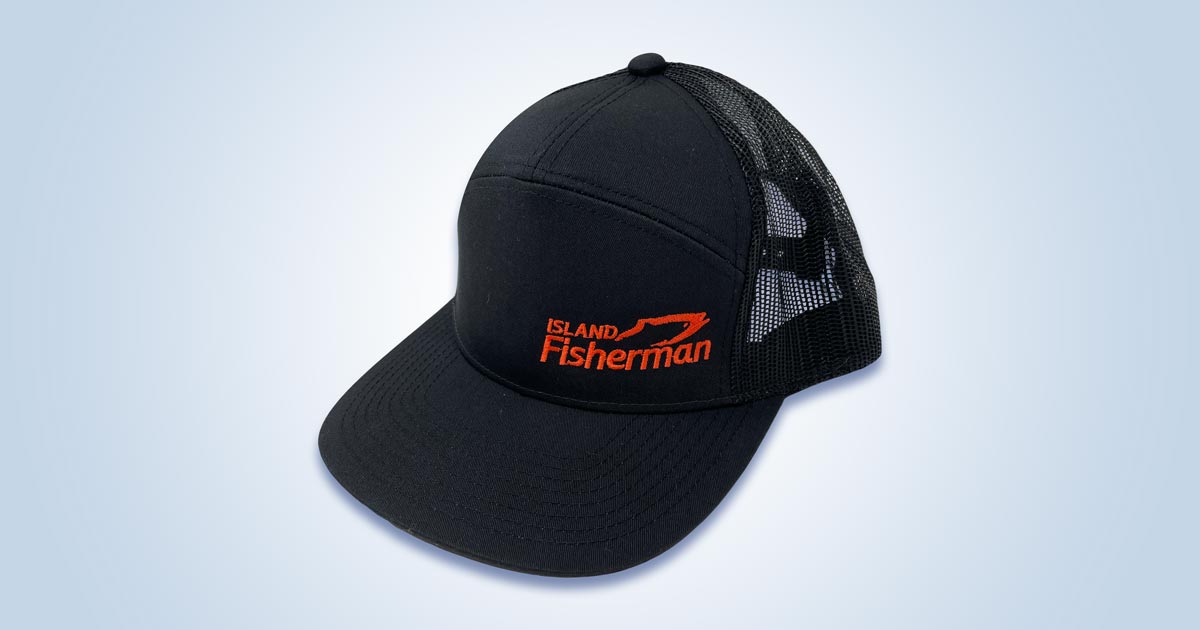
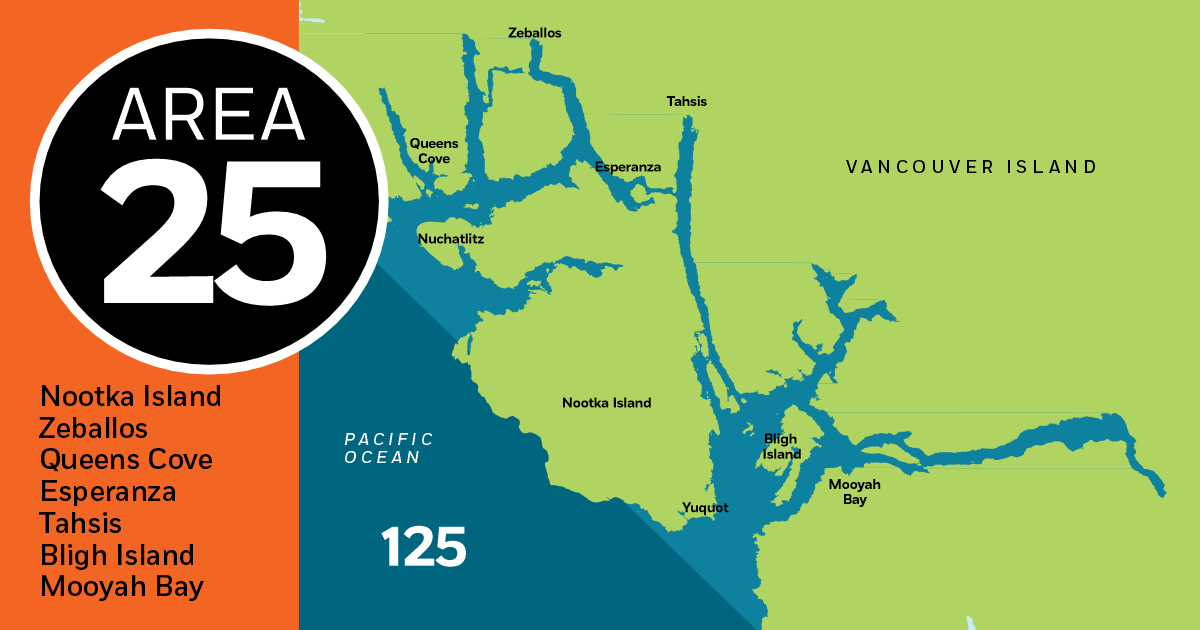
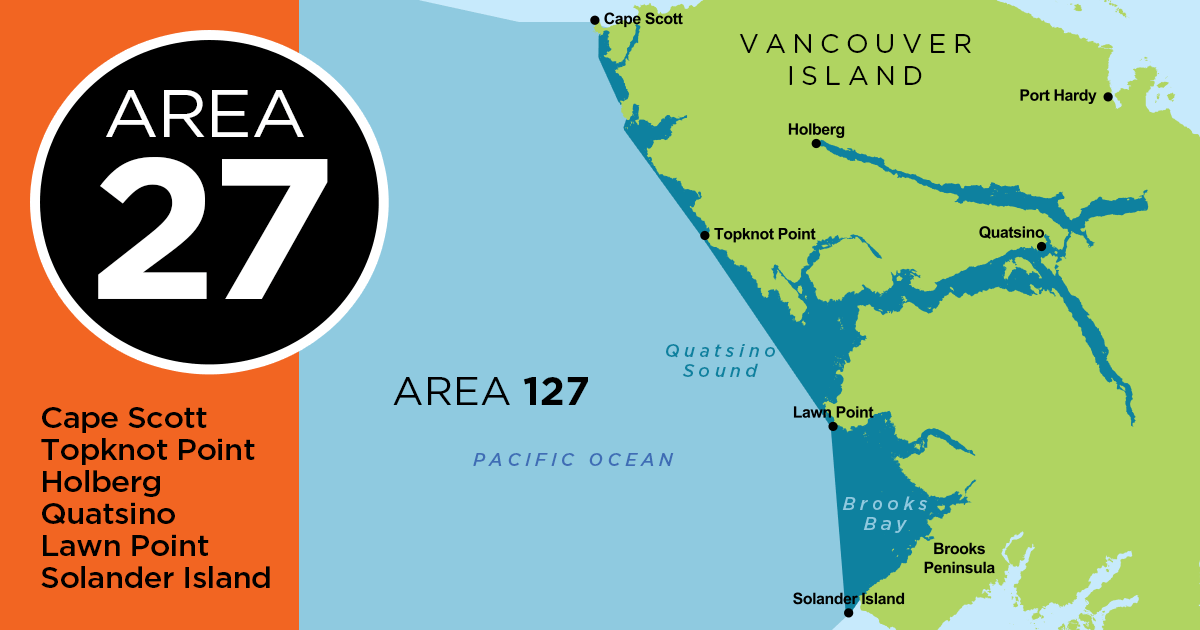
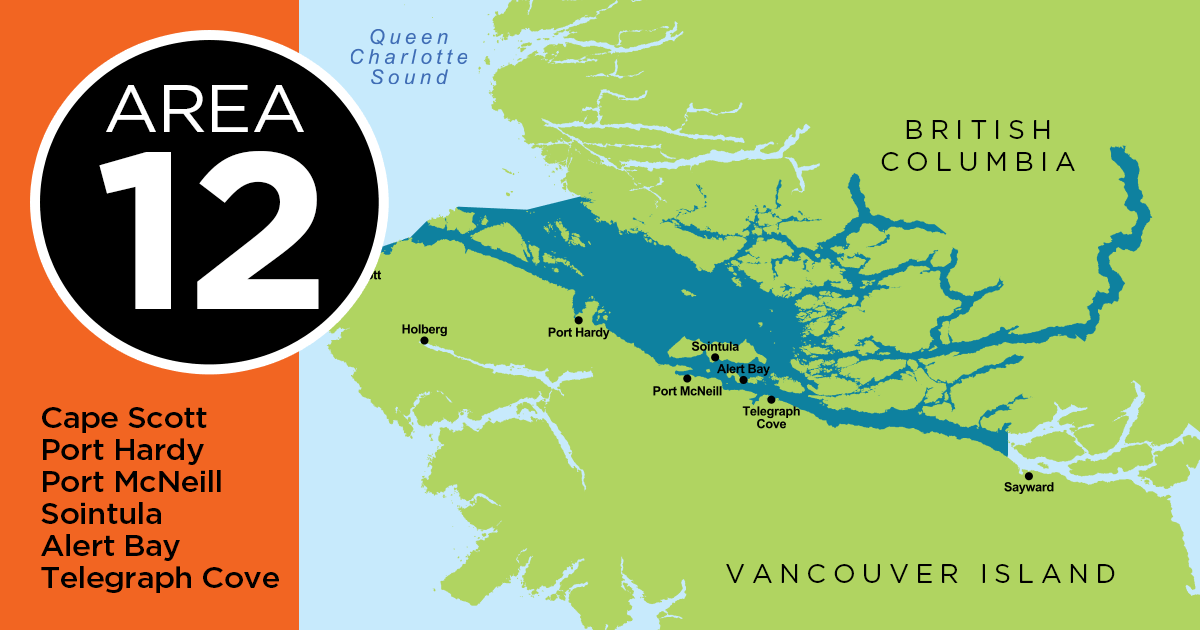
Great write-up on winter fishing for sea-run cutthroat trout in Coastal BC! I’ve been trying to catch these beautiful fish for years, but never had much success. Thanks for sharing the tips and techniques that have worked for you. I’ll definitely be giving them a try on my next trip. Can’t wait to see what other great content you have in store for us!